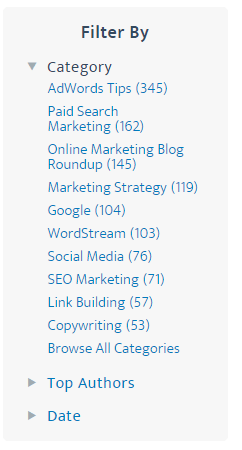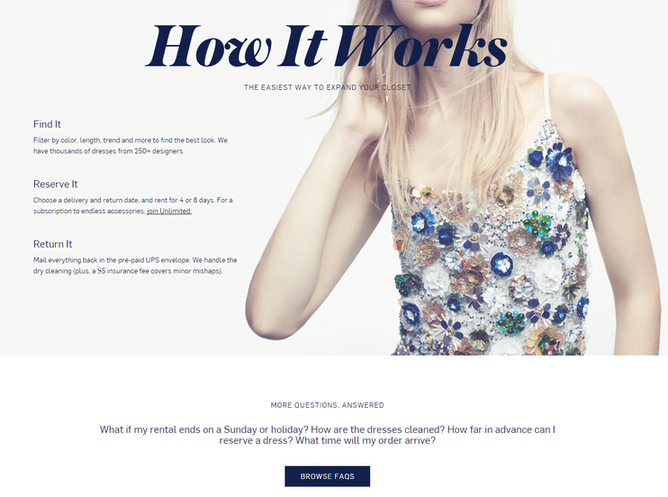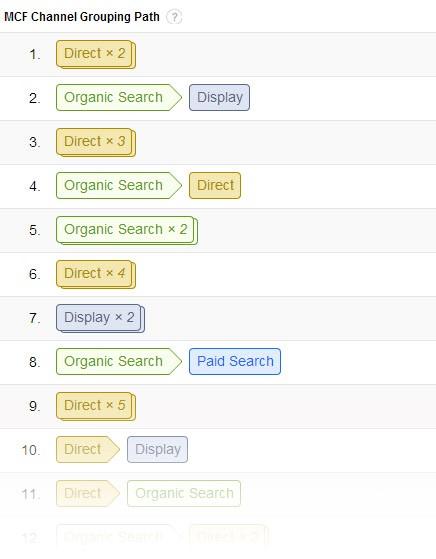
Communities like Silicon Valley and movies like The Social Network have glamorized the idea of working at a startup. There’s a stereotype that startup employees spend their days pouring cup after cup of locally brewed drip coffee, napping in their companies’ lava-lamp and hammock filled “nap rooms,” coding late into the night on their Macbook Airs, and concluding their day by paddling home on their eco-friendly bicycles.
Unfortunately this lifestyle might not be all it’s cracked up to be. Working at a startup typically means high risk and low pay. The chances of success are limited, with several studies declaring that over 90% of startups fail. There’s even a global conference called FailCon where failed startups share their stories (seems sad, doesn’t it?). This is why employees and founders need to be overflowing with passion for their products or services and comfortable with uncertainty.
Image from Flickr
MORE: 9 Killer Demand Generation Strategies for New Brands
What’s the Definition of “Startup”?
But when is a company truly in startup territory? The true definition is unclear. According to the Business Dictionary a startup is defined as the “early stage in the life cycle of an enterprise where the entrepreneur moves from the idea stage to securing financing, laying down the basic structure of the business, and initiating operations or trading.” Forbes wealth writer Natalie Robehmed declares that the typical life-span of a company to still be considered a startup is approximately under three years. “This often coincides with other factors that indicate a graduation from startup-dom: acquisition by a larger company, more than one office, revenues greater than $20 million, more than 80 employees, over five people on the board, and founders who have personally sold shares,” writes Robehmed.
As to be expected, startup companies are typically swimming (or drowning) in an ocean of problems, the majority of these issues relating to money. So where does this leave marketers when it comes to using paid search to gain traction for their startups? Should they just ignore AdWords all together or blindly throw a chunk of their budget at it while crossing their fingers and hoping for return? I would argue that if PPC is ignored all together, these startup companies are going to lose a huge chunk of their potential business, and their growth rate and future hope of graduating from startup territory (rather than plummeting to the bottom of the failure backlog) will become even smaller specks on the horizon.
Now that ignoring PPC is no longer an option, where in the world do startup marketers start in the competitive and complicated world of pay-per-click advertising? I have a few tips up my sleeve, but to get an even sharper idea I spoke directly with some local Google-Glass wearing startup marketers to get a sense of their unique challenges and the tactics they used to perfect their paid search efforts.
PPC Marketing Tips for Startup Companies
#1: First Learn PPC
Stop smirking, I’m aware this is obvious, but a major reason why companies fail with PPC is because they don’t take the time to learn how to properly create, manage, and optimize paid search campaigns. Caroline da Cunha, Performance Marketing Manager of the Startup Institute (and my sister!), understands the challenges of learning PPC. The Startup Institute is a 40-person-company that runs an immersive eight-week program which prepares people for a career at a startup. Caroline runs all paid search and PPC campaigns including AdWords, Facebook, LinkedIn, and Twitter. “It’s a steep learning curve, and there’s always more you can learn about how to optimize and take your campaigns to the next level,” she states. She goes on to stress the importance of taking the time to learn PPC. “If I didn’t spend a lot of time learning paid search I would’ve likely wasted our limited budget by making simple mistakes.”
So hit the library, put your reading glasses on, and start studying. Start by learning the fundamentals of Google AdWords, including how the ad auction works, how to properly structure an account, the different keyword match types, how to identify and set up negative keywords, determining your budget and first time bids, how to set up conversion tracking and optimize your account on an ongoing basis. WOW, that was a mouthful. Is sweat dripping from your forehead yet?
I recently spoke with Ad Optimization Specialist Stephen Plesko, who works for OrionCKB, a startup agency that specializes in Facebook and PPC advertising. The agency is a true startup, born in 2013 with only thirteen employees, but Stephen didn’t always spend his days optimizing PPC campaigns. “I was introduced to it at a high-level beforehand, but most of my training was on the job. Once I actually took the time to dive into real accounts and learn the principles of structuring campaigns to ensure they run efficiently, everything slowly started tying together,” stated Plesko. “PPC isn’t something I learned overnight.”
But when the majority of startup employees are all-in-one wizards whose bandwidth is expected to stretch across multiple facets of the business, when could one possibly have the time to learn these concepts? Well, you simply need to carve it out for PPC to function properly. Here are a few resources to get started:
- PPC University: We’ve created this online campus at WordStream to guide you through the scary woods of PPC and make sure you get out of the trenches with an A+ to set you on the track to PPC success. Explore our courses starting with PPC 101 to learn exactly how the Google Ad Auction works and nail down important PPC concepts and definitions. I’d recommend moving through the content in chunks while simultaneously poking around in AdWords or WordStream’s PPC Advisor to familiarize yourself with the platforms. Once you’ve gotten through PPC 101, 102, and Advanced check out some of our most highly-attended webinars and white papers that spark your interest.
- Check out Google’s Exam Study Guides: I’m not suggesting you strive to become a partner and get certified (although that would great), but if you’re in the startup world again, I understand your strapped for time. Instead browse through the exam study guides and dig a bit deeper into concepts that you’re not familiar with or you need some clarification on.
- Explore the WordStream blog by category: Not to sound cocky, but the WordStream blog is pretty spectacular, although you may have noticed our topics are all over the map when it comes to online marketing. The PPC and AdWords specific blogs are typically written by our most knowledgeable customer success representatives who spend 40+ hours a week working with paid search and helping clients of various sizes in a huge span of industries. They’re all AdWords and Bing certified, receive continuous education, and are required to keep up-to-date with new AdWords features and algorithm updates. Put lightly, they are all PPC experts so visit our blog and filter by category to browse through our AdWords Tips and Paid Search Marketing libraries. (You’ll also find tons of articles by our brilliant founder Larry Kim.)
#2: Address What Problem Your Business is Solving (rather than solely pushing your products or brand)
No one knows your brand yet because you’re a startup (sorry to be blunt) and a lot of startups have niche products that their target audience might not even realize they need, so you need to find keywords that appeal to what they need, and then demonstrate that your product or service fulfills this need through your ad text and landing pages. When a user goes on Google they are searching directly to find ways to solve their problems, and if your offerings can provide a solution then your chances of gaining their business will increase substantially. For example let’s say you sell a weight loss tracking bracelet, similar to a Fit Bit; instead of targeting the keywords “weight loss bracelet” you’d likely have more luck targeting “weight loss help” or “trouble losing weight.” You might even want to try bidding on more established competitor keywords and then creating ad text that outshines theirs. Highlight the benefits of your product that solve the problem the searcher is having.
Entrepreneur Thomas Oppong says it well, “Anybody who has ever made a decision to purchase a product already has an existing problem. Find the problem, offer the benefit and explain why your product will solve it.” He stresses the importance of easing in before pushing your offerings: “Your first goal is to attract attention before you even present your product.”
How do you apply this tip to your PPC campaigns?
- First, think like the searcher (your potential customer) and brainstorm what problems they’re trying to solve
- Conduct keyword research using problem related keywords to find words and phrases that have decent search volume and will get traction to your ads
- Create ad text that speaks to the searcher and explains that you’re aware of their problem and that you can fix it
- Keep the entire experience relevant and consistent so the user realizes throughout the search, click, and landing page that you’re aware of their problem and you can solve it
#3: Start Small
A major red flag that startups make with PPC is creating a dictionary long list of keywords and shoving them into multiple campaigns and ad groups. Not only does this waste hours of your precious time, but it’s unnecessary and likely sets you up for failure. Why? Because startup budgets are small and jam packing your account with fluff is going to stretch your budget and utilize it on keywords and ads that yield no return. Instead start with one or two campaigns with around 2-4 ad groups under each campaign. Your campaigns should likely be determined by budget and product, so for example if you sell outerwear and your highest selling e-commerce product is ski jackets then create one campaign around that product. Then create ad groups that group similar keywords together for example (ski jackets, men ski jackets, women ski jackets, junior ski jackets) and then direct traffic from each ad group to the most relevant ads and landing pages.
“We recently had to do a major restructuring of our account,” stated Caroline. “Before I really dove into PPC I inherited our AdWords account set up beforehand. It was jam packed with ad group after ad group and an extensive keyword list. This made it not only difficult to manage, but overextended our budget. Now we’ve drilled down to really focus and hone in on the keywords that are a major priority for us and that we’ve researched to ensure they have a high enough search volume to generate relevant traffic.”
I’ve come across startup accounts that have several campaigns with about 50 ad groups under each campaign and thousands upon thousands of keywords. And guess what the result is? Google looks down at your teeny unknown winter apparel shop with blurred vision. They instantly become confused as to why this no-name newborn business is building an account as large as REI’s with a budget as small as Joe’s mom and pop shop around the corner. So pump the breaks, start small, and then as you see success continue to build and test your account structure to gain more profitability and grow as your company grows.
#4: Keep Your Offers Educational
As we went over in tip #2, people are typically searching to solve a problem on Google. All-too-often I hear that a client’s goal is to make money. I get it! We all want money for booze-filled vacations, steak dinners, or assistance with that college debt that continuously thins out your bank account. But with paid search, startups again need to realize that their brand is not well-known – it’s actually likely not known at all by about 99.999% of searchers. If your brand isn’t established then you need to evaluate where your searchers are in the funnel, and that is at the tippity top. The trust factor is at below 0 so your offers need to be adjusted accordingly. This is where education is key, and I’m not talking about cheesy marketing language like “We’re #1 in the industry” or “Results guaranteed.” Don’t make these bold claims without statistically significant data to back them up. “We tested the strategy of directing candidates to our application pages, but found they weren’t quite ready to commit,” Caroline stated. “Now we’re focusing on increasing awareness and driving more potential candidates to the top of the funnel so that we can then nurture them through other outlets like email marketing.”
Follow these tips to cater your offers to your Google searchers:
- Evaluate your ads and landing pages. Are you offering a 30-day free trial for your new no-name financial software? Well, your Google searchers are probably not even close to ready to committing to a 30-day trail when they know jack about your business. Instead reflect the search terms used to find your ads in the language of your ads and landing pages. HelloFresh does a great job at this. As you can see the in the example below I Googled “Meal Subscription Service.” While Googling this I’m not at all ready to commit, but more looking to see what’s out there. Hello Fresh’s ad perfectly reflects my search terms in their headline. They also display all of the benefits and unique selling points of their service and have sitelink extensions (which I highly recommend enabling) so I can gather additional information on how it works, what recipes are used, what the boxes look like, etc.
- Create call-to-actions that appeal to learning. This goes along with the bullet above of not being overly eager when it comes to attempting to shove new leads down your sales funnel. For example utilize an educational CTA such as “Download this free e-book” or “Learn more today” rather than “Start your 30 day trial” or the even more aggressive “Buy now.” Think of your call-to-actions like the very beginning of a new relationship, you’re not going to ask someone you just met to move in with you, but a cup of coffee or casual phone conversation are likely options. Then you can nurture the leads that have already shown interest with more aggressive offers.
- Provide phenomenal content: Conduct original research, data-driven studies, and come up with out-of-the-box ideas that show that your company is a thought-leader and soon to be big player in your industry. If you offer a product that is more complicated, like a specific healthcare marketing platform or accountant management software, then create content that educates your potential customer through in-depth e-books, whitepapers, or educational video tutorials, and promote those offers through your ad text and landing page CTA’s rather than shoving a longer commitment in their face from the start. Startups offering more straightforward products still have an opportunity to educate. Rent the Runway, a popular dress rental company founded in 2009, has grown substantially partly credited to their fantastic website experience and engaging content. They provide some phenomenal content, much of which is visual, which makes sense for the industry. From their blog to their social media channels, their messaging is clear, concise and thoughtfully crafted. Take a look at this landing page below; it’s the perfect non-committal pre-transactional call-to-action for the searcher that is not quite ready to commit. The content of the page is visual, has minimal text, but includes the necessary copy for someone new to the service to understand how it works, and the call-to-action is there to answer any questions that arise like what happens if I spill on my dress or if it doesn’t fit properly? If someone is new to the service they are much more likely to investigate before making a rental purchase.
#5: Keep a Constant Eye on Your Competitors
Stalk them at all waking hours of the day! Show up at their headquarters and sneak into their company outings. Clearly I am kidding, please do not do any of those things; There are much easier ways to keep a close watch on your competition and ensure you’re staying in (and hopefully ahead) of the game. But first you need to identify the companies you are competing with. Going back to our ski apparel example if you’re a Startup in the industry then you don’t want your ads showing alongside Northface or Patagonia, but in contrast with some local or small/new-to the industry type brands. If you’re a small Startup with a unique offering you might not have any direct competitors, but you likely have awareness of companies that are in a comparable industry and similar in culture, size, etc. Use these companies to inspire you, but also differentiate you by highlighting the components you offer that your competitors do not to appeal in a distinctive way to the searcher (think free shipping & returns? 24-hour customer service? Huge holiday discounts?). Ask critical questions like, “do other startups offer a benefit for which you offer a strong differentiation? Are they bidding on keywords you’ve missed? How are their ads and landing pages different from yours?” writes Marcel Pirlich, CEO of Adspert. To stay ahead of your competitors:
- Utilize Google’s Ad Preview & Diagnostic Tool: This tool allows you to conduct Google searches using the keywords your bidding on and locations/device preferences you’ve selected to find not just your ads, but also the competitor ads surrounding yours without racking up impressions. This will give you an idea of who your ad is appearing alongside and what you need to do to highlight your unique selling point. “A lot of my clients are fighting for the same space, and their competitor’s ad copy is right next to theirs,” states Plesko. “You need to be far more intriguing.”
- Monitor impression share and identify opportunities to improve this metric: Impression share is the number of impressions you’ve received divided by the estimated number of impressions you were eligible to receive. Therefore if your impression share is low then you’re not getting the exposure that you should be and that your top competitors likely are. So you need to get back in the game, but how? Some strategies include adjusting your ads targeting settings (you might be limiting your reach by targeting too narrowly), ensuring all of your ads, keyword, etc. are approved by Google, raising bids that are too low, and working on improving the quality score of your ads overtime. I recently chatted with another Boston-based startup employee, Alex Raymond, an Ad Operations Specialist at the data-driven marketing startup Social Fulcrum. He explained that abusing geo-targeting is something he sees his clients struggle with often. “Intensively geo-targeted products are usually the most difficult because it really restricts visibility. We’re a startup working with other startups so exposure is critical,” explains Raymond. “I’ve found accounts that are geo-targeting very specific areas around New York and then realize that they’re missing out on a population of 3 million plus people. Once their reach is expanded the results have the potential to reach new heights.”
#6: Track & Test
You’ve heard it before and it’s critical for every industry so why am I repeating this over-used marketing mantra? Well, it’s that much more important for startups where uncertainty of success is on the fence and budget is precious (as in limited). But what should be tracked? Well, this is going to vary across industries, but in the end for startups it’s all about the return on investment. According to Raymond, CPA is typically the most important metric to measure and move the needle on. “These guys are startups so everything comes down to dollars and cents because they need to make money to stay in business,” he states. Yes, impressions, click-through-rates, quality scores, all of these numbers are important, but if you’re only throwing money at your PPC efforts and getting nothing in return then you’re doing something prevalently wrong. When it comes to tracking, there a few critical things to keep in mind:
- You absolutely must set up conversion tracking if it’s not already. Follow the steps in this post to start tracking.
- Keep track of conversion paths in Google Analytics to get a much clearer picture of the value of your paid search efforts (as well as the other channels that are driving conversion). According to WordStream’s Dan Shewan, “Wouldn’t it be wonderful if prospective customers saw your ads, visited your site and ultimately made a purchase – all in one sitting? Well, it rarely works like that which is why understanding conversion paths is so important.”
- Don’t jump to conclusions. If you’re ads have been running for a week, and you’re not seeing conversions then don’t freak out and pause everything. Instead give time for data to accumulate. Also once enough time has gone by (as a rule of thumb, typically a minimum of 30 days), and data has accumulate see if there are tweaks you can make to higher your chances of gaining conversions. For example if you’re not getting much exposure (i.e. impressions) change your targeting settings and add some broad match keywords. In contrast, if you’re getting lots of exposure, but its irrelevant review the Search Query Report to identify negatives, bid on more restrictive match types, pause keywords that are underperforming and raise bids on keywords that are performing well.
Testing goes hand in hand with tracking. Once you track and perhaps realize your return is essentially non-existence then you need to test a new strategy whether it be focusing on a different campaign, ad group, or set of keywords or testing variables within your ad copy and landing pages to improve return. Raymond’s experience at Social Fulcrum has taught him the value of testing. “We test everything – creative, headlines, footer combinations. Instead of making a beautiful ad, shoving it in people’s faces and saying trust us, we’re experts, we’ll sit there for two hours coming up with 30 ideas and we’ll test every single one, and tell you which one is the best,” states Raymond. He goes on to stress, “Don’t be afraid to test, but remember to follow the rules of testing, as in testing one variable at a time. If you’re testing too many things at once this can become confounding and confusing.”
#7: Create an All-Visitors Remarketing Campaign
As we’ve gone over time and time again nobody knows you yet! As a no-name company you need to get out there and strut your stuff. I understanding that you might be intimidated by the bigger fish in the pond, maybe a bit self-conscious? Well, this is where remarketing plays in as a risk-free way to expose yourself to the people that have already expressed a certain level of interest by visiting your site. For those of you not aware, remarketing advertisements are those mind-reading ads that you see across the internet after you’ve visited a website. No, those Gucci heels that you looked at 3 days ago did not just appear as a meant-to-be type coincidence (although feel free to tell your significant other this when they arrive at your doorstep). “Retargeting has been proven to be an effective digital marketing tool,” writes serial entrepreneur, Adam Toren. He concludes that it’s also become shockingly inexpensive.
All-visitor remarketing campaigns are super easy to set up, and a great way to gain safe exposure. Why all visitors though? Isn’t it better to segment by audience and target those more likely to convert? Well, yes, in theory, but being a startup I would recommend starting with all-visitors to get the maximum amount of exposure possible. Once you’re comfortable with search and remarketing, I’d recommend branching out to the Google Display Network.
#8: Utilize a Third Party Management Platform (like WordStream)
Every startup employee that I’ve spoken to stresses how thin their bandwidth is and how they constantly have a laundry list of items on their to-do list, which makes prioritizing PPC a major challenge. “Having to learn the technical skills to manage paid search on my own in the mist of the million other tasks on my plate has been the most challenging part,” states Caroline. “It’s hard to block off specific time to work on PPC because high-priority items consistently pop out of the wood work so time blocks are never guaranteed.”
Are you juggling an oversized bag of tasks simultaneously and about to spin off your tricycle into the wheel of fire? Then it might be time to invest in a third-party to either help you maintain your account or manage your account for you. In my personal opinion maintaining control of your own paid search efforts is critical for one legitimate reason – no one knows your business like you do. This is why a third-party self-management platform is the perfect solution because it guides you with account-specific recommendations while giving you the ability to keep control of your account and reach your goals on your own terms. If you haven’t looked into WordStream’s PPC Advisor then I would start by grading your account to see what opportunities you may be missing out on, and then connect with one of our AdWords Certified Professionals to explore the tools with you and even find some quick wins in your account.
#9: Advertise on Other Channels, Such as Facebook, to Increase Brand Awareness
Of course I am always going to preach that advertising on Google AdWords is critical for business growth, but you should never limit your paid ads to one platform. Social media, which is now the top internet activity according to a study by BI Intelligence, is one place where you should invest a portion of your budget. Facebook happens to be dominating the market with seven times higher engagement then Twitter. Many startup employees preached that Facebook has yielded the greatest return for their startups or their startup clients. Raymond told me the story of his client that sells SAT and other testing preparation materials. “We started off with them a long time ago and they didn’t know if they should do AdWords, Facebook, or LinkedIn and how the pricing worked,” he states. “Facebook ended up being their main money-maker. Over the course of a year we’ve gotten their cost-per-lead down by over 90% and their close rate has improved substantially.”
Plesko has found that Facebook and AdWords work well together for several of his startup clients. “Facebook tends to be more direct and puts the product in front of an audience and combining that effort with the people searching directly on Google, it can work wonders,” says Plesko. “Facebook can also be easier for startups who have to fight a little bit stronger since they have no brand recognition. If people are unaware or their products are very unique, the majority of people who will likely be interested are on Facebook.”
Now that you’re fully versed in what you need to do to succeed with PPC in the startup environment it’s time to get to it so that you don’t fall into the 90% failure rate that most startups do. Raise above, put yourself out there, and take over Google with your enticing entrepreneurial presence.













